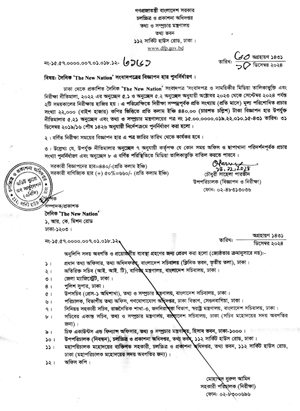Weekend Plus Report :
Terrazzo flooring is popular for residential as well as public buildings since it is not slippery when wet.
Terrazzo Flooring
It is popular flooring for residential as well as public buildings. A Terrazzo floor is usually not slippery when wet because of many grout lines.
Composition
The floor consists of an under layer of cement concrete in ratio of 1:2:4 (1 part of cement: 2 parts of coarse sand: 4 parts of graded stone aggregate 12.5 mm nominal size). Its thickness depends on size of marble chips used.
Under Layer
Cement concrete mixture should be used for under layer. The panels should be of uniform size. In exposed situations, length of any side of the panel should not be more than 1.25m.
Fixing Strips
4 mm thick glass strips, 1.6 mm thick aluminium strips or 2mm thick PVC strips should be fixed with their top at proper level to get required slope.
Top Layer
The mixture for topping should consist of cement with or without pigments, marble powder, marble chips and water. The cement and marble powder should be mixed in ratio of 3:1 by weight.
Grinding and Polishing
Grinding may be done either by hand or by machine. Machine grinding should be done after 4 or 5 days of laying the floor.
Marble chips
The chips should be white or pink Makrana, Black Bhainslana, Chittor black, Jaisalmer Yellow, Dehradun White quality etc.
They are hard, solid, dense and uniform in texture and have hard/coarse granular particles.
Laying Terrazzo Flooring
The following steps are useful when laying Terrazzo flooring.
Attractive Terrazzo floors and panels are created by exposing marble chips and other fine aggregates on the surface of finished concrete.
Terrazzo floor requires three layers of materials. First, 3 to 4 inches base concrete and 1-inch layer of cement concrete.
Before this layer sets, metal divider strips are partially embedded in concrete wherever a joint or change of colour in terrazzo is desired.
For final layer, each panel is blended and placed with a fine marble chip mixture that may be colour-pigmented.
Lightweight roller is rolled over entire surface.
When the terrazzo is thoroughly dry, grind it with a terrazzo grinder, which is somewhat like a floor polisher.
Slight depressions left by grinding are filled with a matching grout material and a uniform and smooth surface is made with trowel.
Then clean, polish, and seal the dry surface for a shining finish.
Second Grinding
Second grinding is done with machine fitted with Carborundum stone No. 120.
The surface is again washed, cleaned and repaired like before. It should be allowed to cure for 3 days.
Finishing and Polishing
After final grinding, the surface is washed and cleaned. Oxalic acid powder is sprinkled on the surface and is wet with water; dried and rubbed with clean cotton waste. After that, wax polish is applied with soft cloth on clean and dry surface. This should then be rubbed with clean cotton waste and wooden saw dust.
First Grinding
The surface should be watered and ground with machine with grit block i.e. Carborundum stones of coarse grade No 60 till marble chips are evenly exposed and the floor becomes smooth.
After first grinding the surface is thoroughly washed to remove ground mud and grout of cement and pigment if required to be done on topping to fill in the pinholes and curing is made for 3 to 4 days.
Third Grinding
Third grinding is done with fine Carborundum stone No 320 to get even smooth surface.
Checklist for Terrazzo Flooring
When the floor is ready for use, you should check it on the following grounds.
Proper cement concrete ratio under layer is provided in cement concrete flooring.
Marble chips match with size and specification.
Thickness of flooring is good.
Sizes of panels are right.
There is uniformity of chips and colours.
There are no cracks in the floor.
There is no hollow sound when trapped.
There is proper workmanship-polish, smoothness, lines and levels.
Terrazzo Flooring




